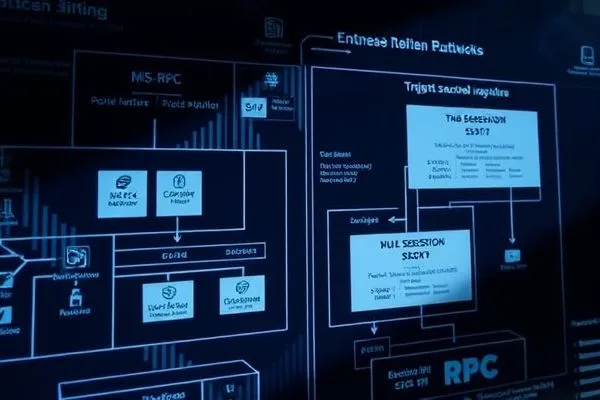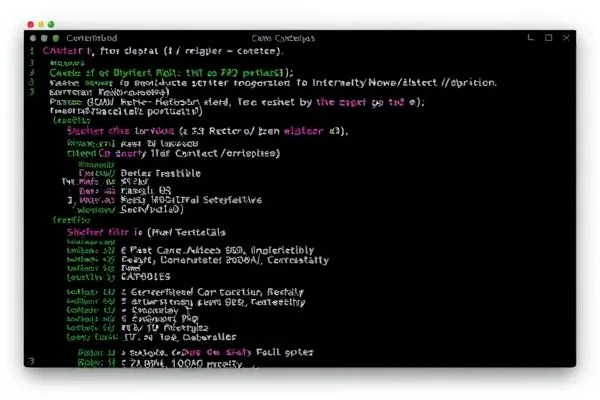As cybersecurity threats evolve, the potential vulnerabilities associated with null sessions and MS-RPC interfaces remain a pressing concern for network administrators. This article delves into the mechanics behind window systems allowing unauthenticated access and the significant implications this has for domain security.
Key Takeaways:
- ✅ Null sessions can expose critical domain information without authentication.
- ✅ Implementing group policies like ‘Restrict Unauthenticated RPC Clients’ has complex repercussions on domain functionality.
- ✅ Effective detection and monitoring require a combination of built-in audit policies and third-party tools.
- ✅ Understanding MS-RPC security settings facilitates robust defenses against unauthorized access.
The Nature of Null Session Access
Null sessions are a form of unauthenticated access that allow an attacker to retrieve sensitive information without needing credentials. Within the Windows ecosystem, MS-RPC interfaces facilitate communication between servers and clients. However, certain configurations permit a breakdown of traditional security models. It is critical to analyze how Windows frameworks handle these scenarios to understand the underlying weaknesses.
The Restrict Unauthenticated RPC Clients Group Policy serves as a protective mechanism, offering settings that can either allow or block unauthenticated access. These settings expose a pivotal paradox: stricter configurations can lead to service disruptions. For instance, selecting the “Authenticated without exceptions” option appears to deny unauthenticated client access effectively, but often leads to unintentional operational failures, significantly affecting domain controller functionality. Clearly, managing risk without hindering administrative tasks demands a tailored approach to policy application.
Windows Management Instrumentation (WMI) plays a significant role as it instantiates DCOM objects necessary for administrative tasks. Changes in user authentication settings can nullify legitimate access, blocking critical functionalities like remote management where these services are essential. Therefore, understanding WMI’s relationship with RPC and authentication is paramount.
Detection Mechanisms for Unauthorized Access
While preventing null session access is essential, detecting instances of unauthorized RPC activity is equally important. Enumeration attempts can often occur without raising alerts, thus necessitating ongoing monitoring practices. Unfortunately, standard Windows auditing policies, such as those outlined in event ID 5712, typically fail to capture relevant RPC activities, causing significant gaps in logging.
Alternative detection methods, such as Event Tracing for Windows, can capture RPC-related events but may generate an overwhelming amount of data, hindering effective analysis. A superior solution involves utilizing specific third-party solutions, such as the RPC-Firewall, to audit RPC calls efficiently. This tool allows for filtering based on RPC UUIDs and maintains a connection log that includes actionable information. A well-rounded approach combines both native tools and external applications to maintain the integrity of your network.
Securing MS-RPC Interfaces: Strategies and Best Practices
Securing MS-RPC interfaces involves recognizing and modifying the access methods available to clients. When granting access to RPC servers, non-authenticated connections could lead to significant vulnerabilities. By employing stringent registration flags, such as RPC_IF_ALLOW_CALLBACKS_WITH_NO_AUTH and RPC_IF_ALLOW_LOCAL_ONLY, system administrators can set barriers against unauthorized access while ensuring that legitimate operations can still proceed unhindered.
Moreover, securing the interface goes beyond flag registrations; implementing adequate security descriptors will dictate permissible access to the RPC interface’s functionality. If an interface does not have a security descriptor that restricts anonymous access, it can lead to unauthorized users exploiting accessible functions without authentication.
Conclusion
In conclusion, understanding the interplay between null sessions and MS-RPC interfaces is vital for any entity striving for a robust cybersecurity posture. The nuances present in group policy application, detection methodologies, and security controls reflect the complex nature of modern network environments. Continuous adaptation and education around these vulnerabilities will empower administrators to fortify their defenses effectively. As cybersecurity threats evolve, staying abreast of these intricacies becomes paramount for maintaining a secure operational landscape.









